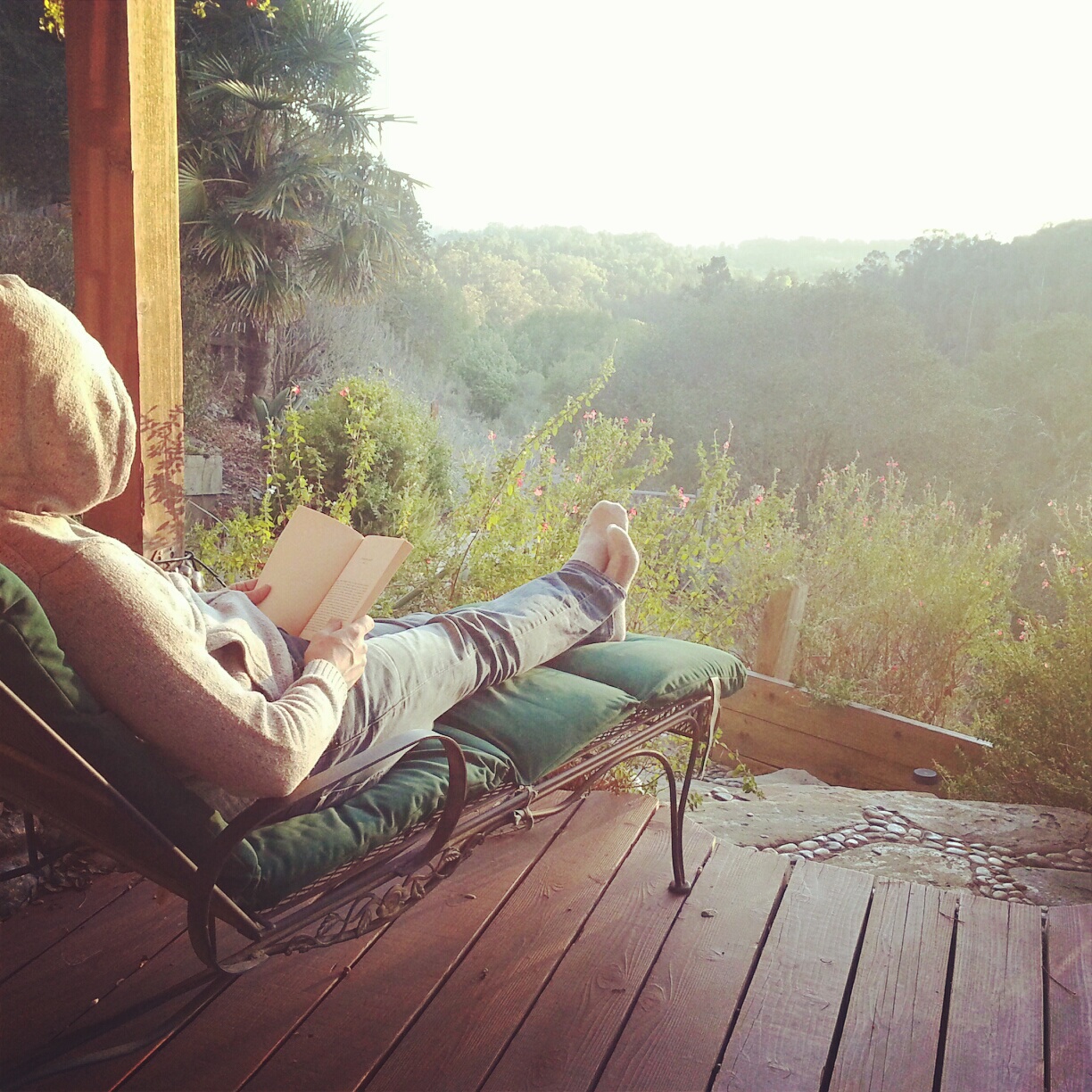November 2012
The Bridge of San Luis Rey, by Leonard Emma
I am an attorney. I read and write for a living. For me, reading is most often associated with stressful things like deadlines and problems that need to be solved or overcome. Before my stay at the Library House in November 2012, I hadn’t picked up a novel since 1997.
Vivian (my wife) and I needed to recharge our batteries, so we arranged a weekend getaway for us at the Wellstone Center in the Redwoods in the Santa Cruz Mountains. We chose the Library House — a small cabin without electricity or running water set atop a mountain overlooking a canyon and the Monterey Bay. What it lacks in creature comforts it makes up for in location and tranquility. I expected that Vivian and I would spend our time hiking, consuming healthy foods and enjoying one anther’s company. We did all those things within our first twelve hours at the Library House. Now what would we do?
Our cozy cabin was devoid of typical contents. There was no computer. No wireless access point. No television. No board games. No sporting equipment. Just some books. I hadn’t read for pleasure since 1997 and felt like a fish out of water. Then I observed Vivian reclining in a lounge chair on the porch with a book. The weather was perfect — sunny and clear with a slight breeze and crispness in the autumn air. Vivian was peaceful. She appeared extremely comfortable in her pajamas with a glass of champagne at her side and a book in her hands. I wanted to be content too so I gave it a shot.
I turned my attention to the shelves and scanned the books until I came across “The Bridge of San Luis Rey” by Thornton Wilder. “The Bridge” appeared to suit my tastes: it is relatively short at 150 pages, it won the Pulitzer Prize, and it addresses the philosophical question, “Is there a direction and meaning in lives beyond the individual’s own will?” As a student of philosophy, this appealed to me. So I lit a cigar, poured a glass of champagne, and sat down to read.
Thornton Wilder’s writing style is timeless and reminds me of the classics I read in college. Within ten pages I knew I had made a great choice. I read on. Within forty pages, tears had welled up in my eyes (that hadn’t happened to me since grade school when I read “Where the Red Fern Grows” by Wilson Rawls while going through puberty). I was transported from California in 2012 to Peru in 1714, where a bridge collapses and plunges five travelers to their deaths. This tragic incident is witnessed by a friar, who endeavors to explain their deaths through a detailed study of their lives. Over the course of 150 pages, these five characters come to life, with all their virtues and flaws exposed for the reader to judge. Through their stories, life’s moral ambiguities and big questions are presented on a silver platter for us to consider. And that’s exactly what I did from my elevated and seemingly enlightened vantage point in the Santa Cruz Mountains.
I read on until I was done with the book. I was satisfied but wanted more. So I read the forward. Then I read the afterward. And then there was nothing left to read.


